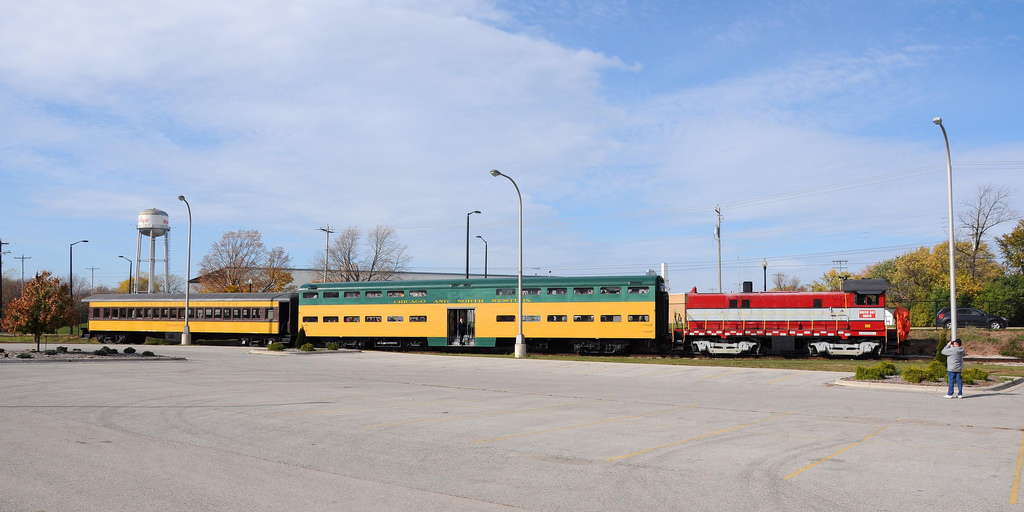“2018 was actually a planning year for us,” she says. “What we have been doing is examining what we are doing and looking at how we can go forward as an organization in 2019. It was a really strong planning year.”
In 2018, museum programming concentrated on “at risk” and special needs groups – not a constituency you would normally associate with a railroad museum. “We do a lot of programming with Green Bay Public Schools especially with schools that have children with “at risk” demographics,” Frank says. “We’ve also have been working with a lot with organizations that have children with special needs. We’ve had a couple of groups that come in on a regular basis to learn basic life skills in a museum setting. Its been really neat because while these are skills you could use and learn anywhere, these individuals become a lot more engaged because they love trains and we are able to connect with them using our train theme.”
Frank says that some are struggling in school, but when they are around trains it helps them connect with the material. The museum’s volunteer coordinator works with the schools and organizations on the project. Frank says it’s part of an effort to serve the community.
“We are preserving these things for the public, but at the same time a museum can’t just be a bunch of stuff just sitting there. We’re part of the community and you can excite people by using the trains, even if you’re not learning railroad history at that moment. If you are tying railroad history to art or geography or something else you can help the community. You’re becoming involved in a really positive way,” she says. “The one thing we are always saying is ‘Yes, we are a railroad museum but we’re not just trains.’ We’re here to serve the community as a whole and however we can do that using our collection we are going to do it.”
One of the more popular events at the museum each year is the Polar Express, and in 2018 it had a new addition: restored Atlantic Coast Line heavyweight diner Dothan. The car, built by Pullman in 1923, made its debut on the Nov. 16 Polar Express trips following a two-year restoration by museum staff and volunteers. In 2018 the museum expanded the number of Polar Express runs, which sold out within 20 hours of tickets going on sale.
“In 2019 we have a number of pieces that need general maintenance,” Frank says. One of those is Chicago & North Western bilevel commuter car No. 32, built in 1956 and used to give rides through the museum grounds. “We are going to be bringing it in and doing some restoration on the interior. We are planning to do that on a lot of our pieces this year; going through them and figuring out what needs to be repaired.”
In 2019 the museum plans to continue fundraising for a major exhibition centering on Union Pacific Big Boy No. 4017 which is displayed indoors in the museum’s Frederick J. Lenfestey Center. As part of the expanded exhibit the museum hopes to construct a smaller version of a coaling tower that visitors will be allowed to go inside. There will be exhibits within it, and to give children an idea of how coaling towers worked, a slide will be installed as the coal “chute.” Kids will be able to slide down the chute, possibly into No. 4017’s tender. Kiosks and sounds systems will also be part of the exhibit to teach people how the locomotive operated.
An expansion of the Lenfestey Center is also on tap. The building will be expanded east toward the Fox River, including windows on the river side so the equipment can be seen from the outside. It will have three tracks, plus room for displays of smaller objects. According to Frank, the museum has over 150,000 smaller pieces such as uniforms and china. No decisions have been made on what rolling stock will be displayed on the new tracks, but Frank said it could include Chicago & North Western hospital service car Joseph Lister once used by Mayo Clinic; Union Pacific dome diner No. 8003; and Richter Vinegar Co. tank car No. 20. The goal is to complete fundraising in a year and half to two years and start construction immediately thereafter.
Another project is to redevelop the Museum’s lobby and theatre area to make it look more like other national museums and monuments, and install new exhibits in that area. That project will begin in January 2020.
For more information go to nationalrrmuseum.org.















This is a very fine museum operation. Green Bay used to be a major rail hub for the C&NW, Milw. Rd., and GB&W. Mostly gone, but the museum is worth a visit to our tundra up here.
AmazonSmile, Amazon Customers
NRHS Heritage Grant Program
Tom E. Dailey Foundation
The John H. Emery Rail Heritage Trust